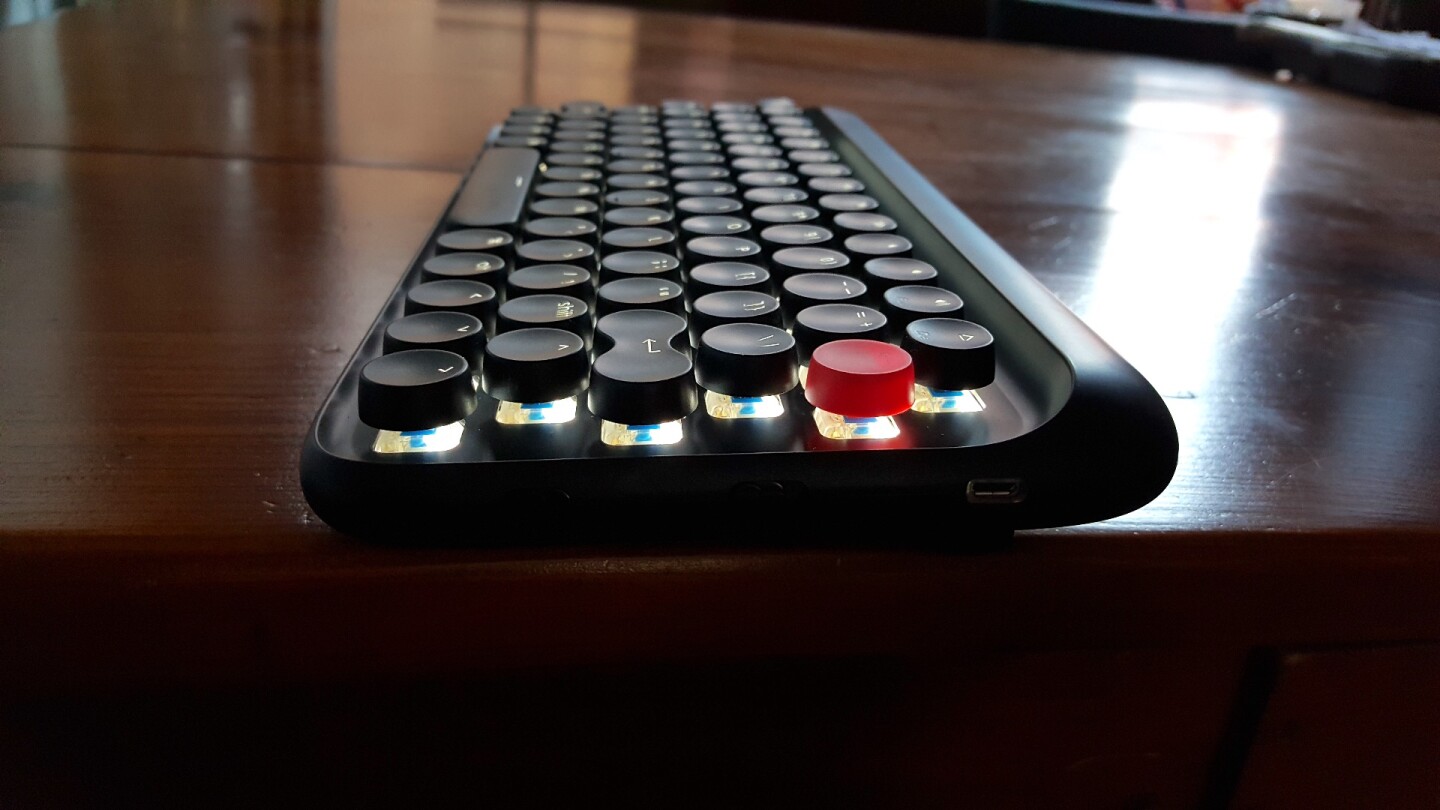A company called Lofree is betting that people will want to go back to using a keyboard that more closely mimics the feel of a typewriter. Based on the runaway success of its current Indiegogo campaign, that bet seems like it was a good one. But after getting our fingers on one, we're not so sure we feel the same.
The Lofree device is a mechanical keyboard, which means it relies on a switch beneath each key to type a letter on the screen. This is different than membrane-based keyboards that complete a circuit when the key is pressed to accomplish the task. It's the difference between clackety PC keyboards and quieter Apple keyboards.
In addition to the mechanical keyboard, Lofree also chose to evoke the typewriter through the use of round keys.
In my test, the mechanical part of the keyboard was incredibly satisfying. There's just something that gets me right in my writer's soul from the audible thunk that came from hitting each key. The round shape of the keys, however, was a different story.
While the design adds a nice retro look to the keyboard, the round keys are so smooshed together that you need to do some precise keystroking. I found that my fingers had to be raised a little higher than normal in order to hit the keys I wanted. While I adapted to that in short order, what I couldn't get used to was the fact that the shift keys on either side of the keyboard were different from each other. On the right side, it's just another round button, no different from the "A" or "O" keys. On the other, the shift key takes up the space of two buttons. Also, the backspace and delete keys are also just little round buttons. Fortunately, the enter key did consist of two buttons fused together.

I'm not quite sure why there was such an emphasis on making this keyboard so compact. It weighs a respectable 1.8 pounds (800 g) and is a bit chunky, so it certainly wouldn't be your first choice for a travel keyboard. A little more room between the keys and properly shaped functional keys would have gone a long way to making me fall in love with the thing.
What I found instead was that many, many times I would go to hit the shift key on the right side and would instead hit the arrow key that is right next to it. That would pop my cursor up a line and I'd start typing my current thoughts smack dab into the ones that came before it. A couple of times – I'm not even sure what happened – but some arcane combination of keystrokes brought about by my fingers getting tangled on such a compact typing surface led to whole swaths of my work being deleted. The "undo" function in my word processing program saved the day, but I eventually had to stop using the keyboard for fear of the havoc it could wreak on a story.
I'm sure that if I truly dedicated myself to the Lofree keyboard, I would eventually adapt to it and type just fine. But the benefit of the clacking key sound and hip look just didn't outweigh my need to type fast and error free.

In terms of style and design, the keyboard gets high marks. As mentioned, it's satisfyingly heavy, and it has rubber feet that keep it from moving on the desk. When I first unboxed the keyboard, I was a bit shocked at how hard it was to see the letters on the keys, but then I realized that they need to be backlit, which is a design touch that adds a bit of fun to the keyboard. The backlight can be cycled through three different levels and cuts off after a few moments of not using the device when working with it over Bluetooth. It pops back on with any keypress. When the keyboard is connected to a computer via USB, it can be set to "on," which leaves the keys constantly lit.
The manufacturers say that the keyboard can last in Bluetooth mode for about a week with 100 percent backlighting, which is impressive. I used it wirelessly for two full workdays and there was no signs of it slowing down. Pairing was easy and quick and there are two switches on the side that let you adjust Bluetooth modes as well as indicate whether you are using the device on Windows/Android or Mac/iOS.

The initial ask through the Indiegogo campaign was US$10,000, but as of today, the company has raised nearly thirty-five times that amount. That's a bit puzzling considering most of the backers won't actually have tried the keyboard to see if they can actually type effectively on it, but Lofree has clearly hit on a need in the market for a sleek, retro-looking, Bluetooth-enabled mechanical keyboard.
If you have the time to let your fingers get used to the challenging layout, you can order one for the pretty reasonable price of $84, a discount of 34 percent off the eventual retail price of $129. Keyboards are meant to start shipping in May of this year and, being that the company was able to send us a keyboard in advance of the campaign, that seems like a reasonable expectation.
Company page: Lofree








